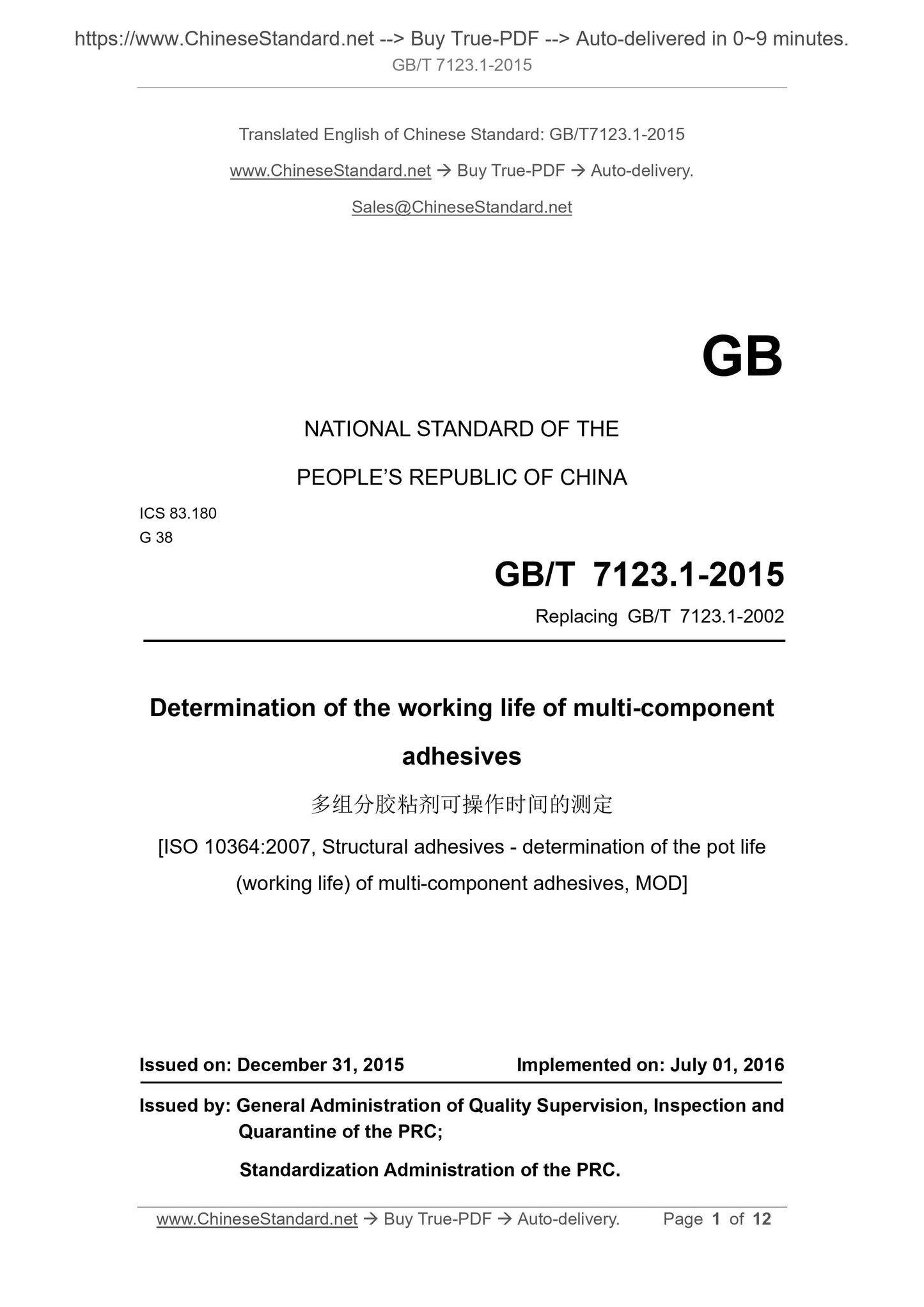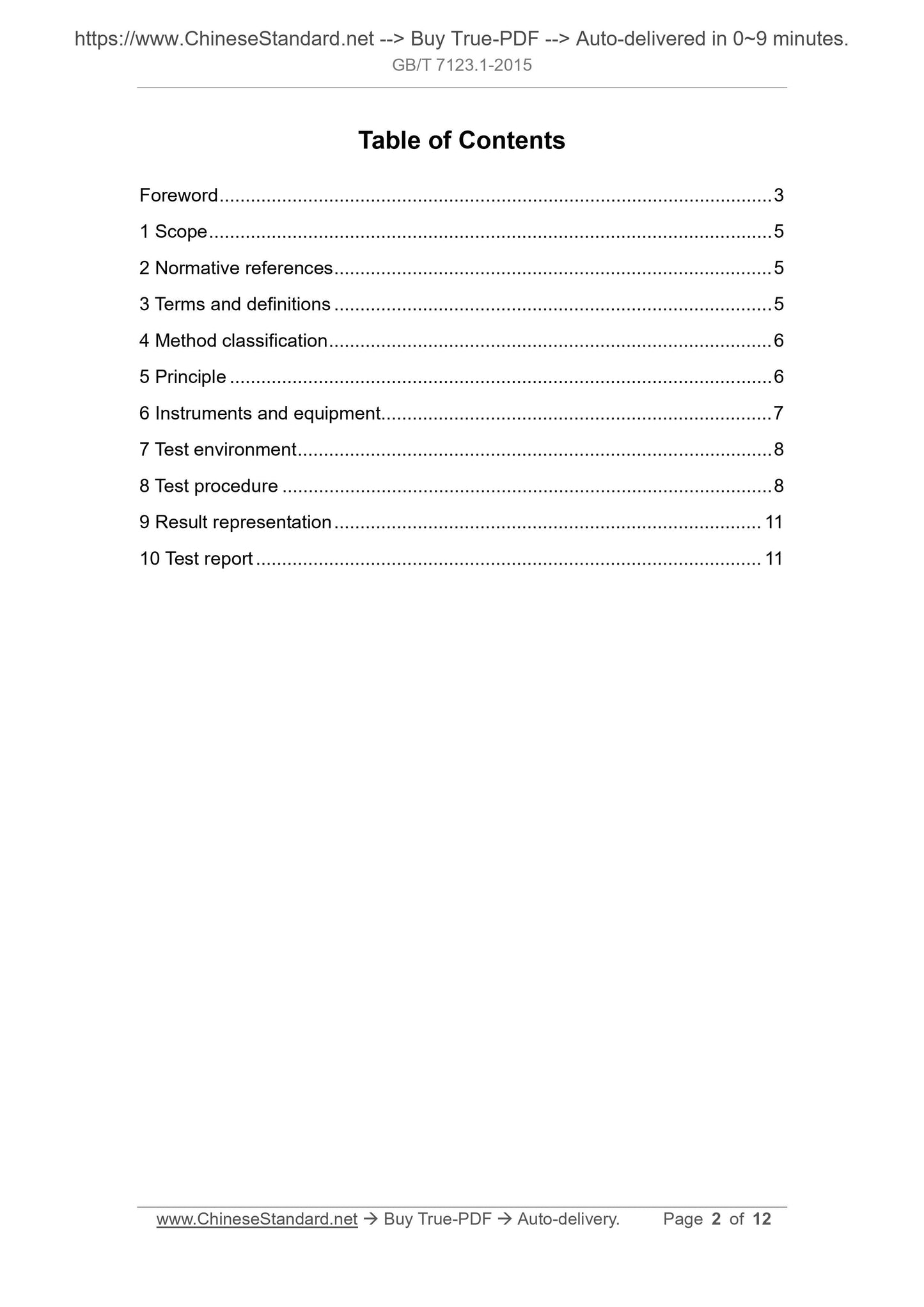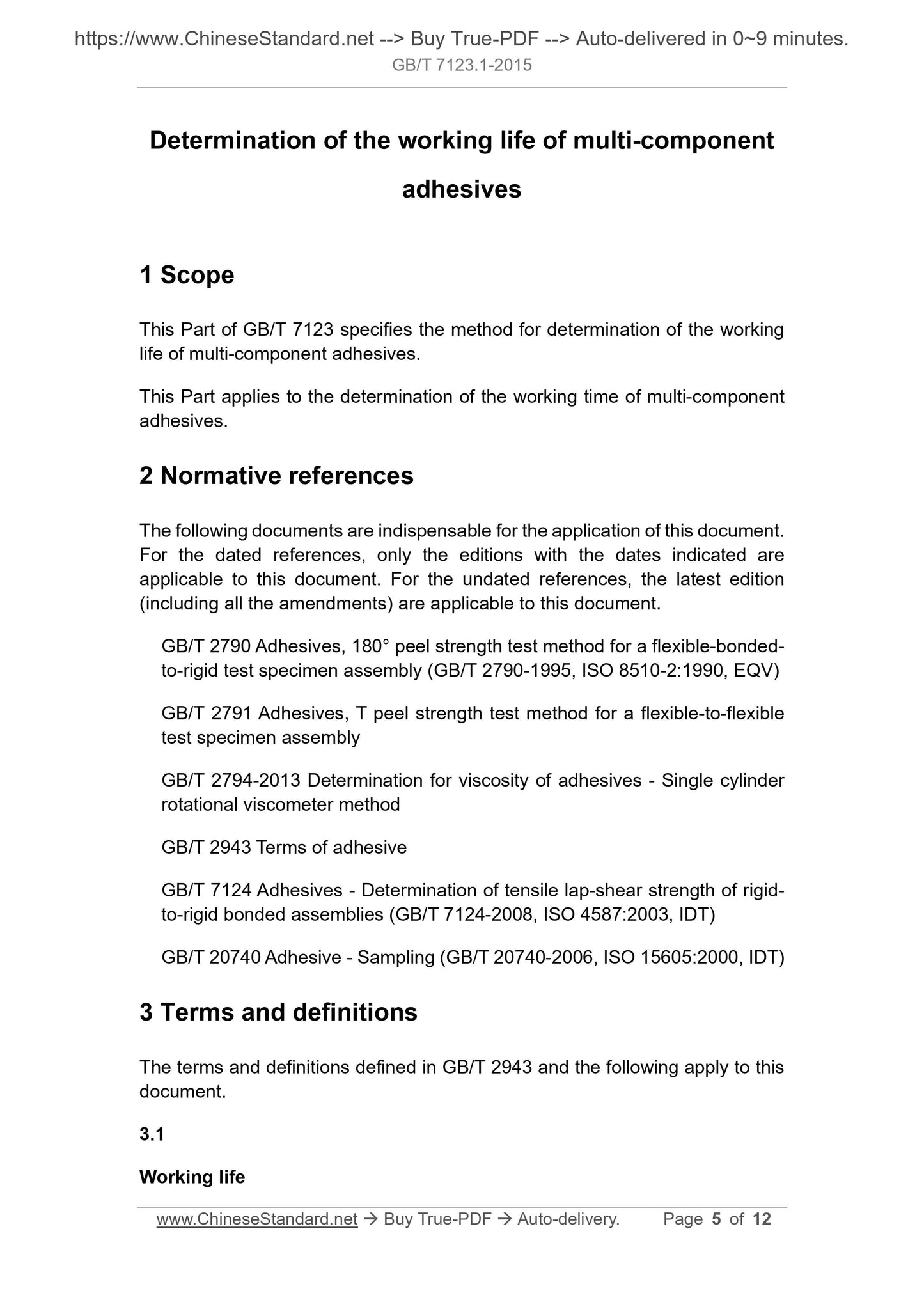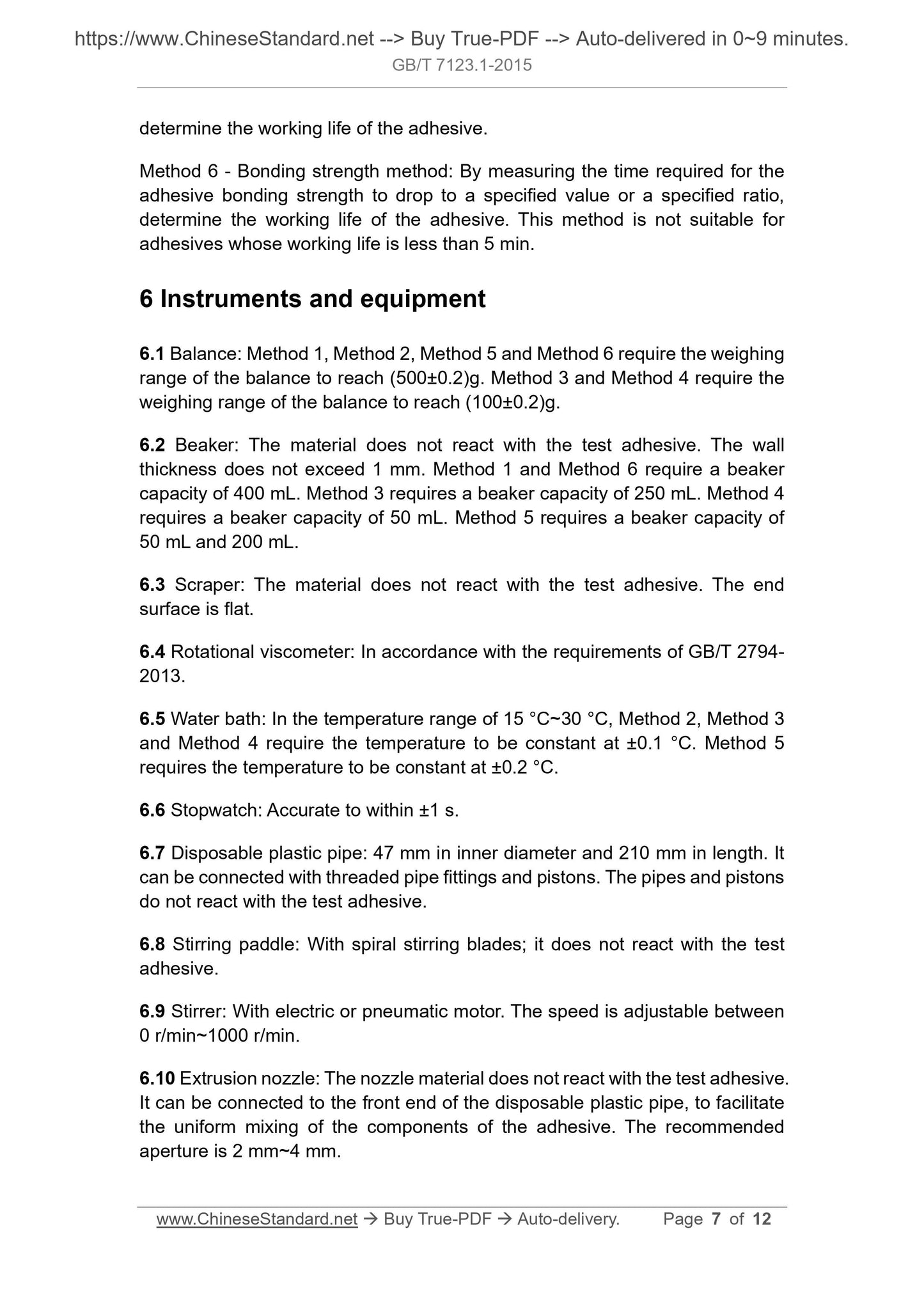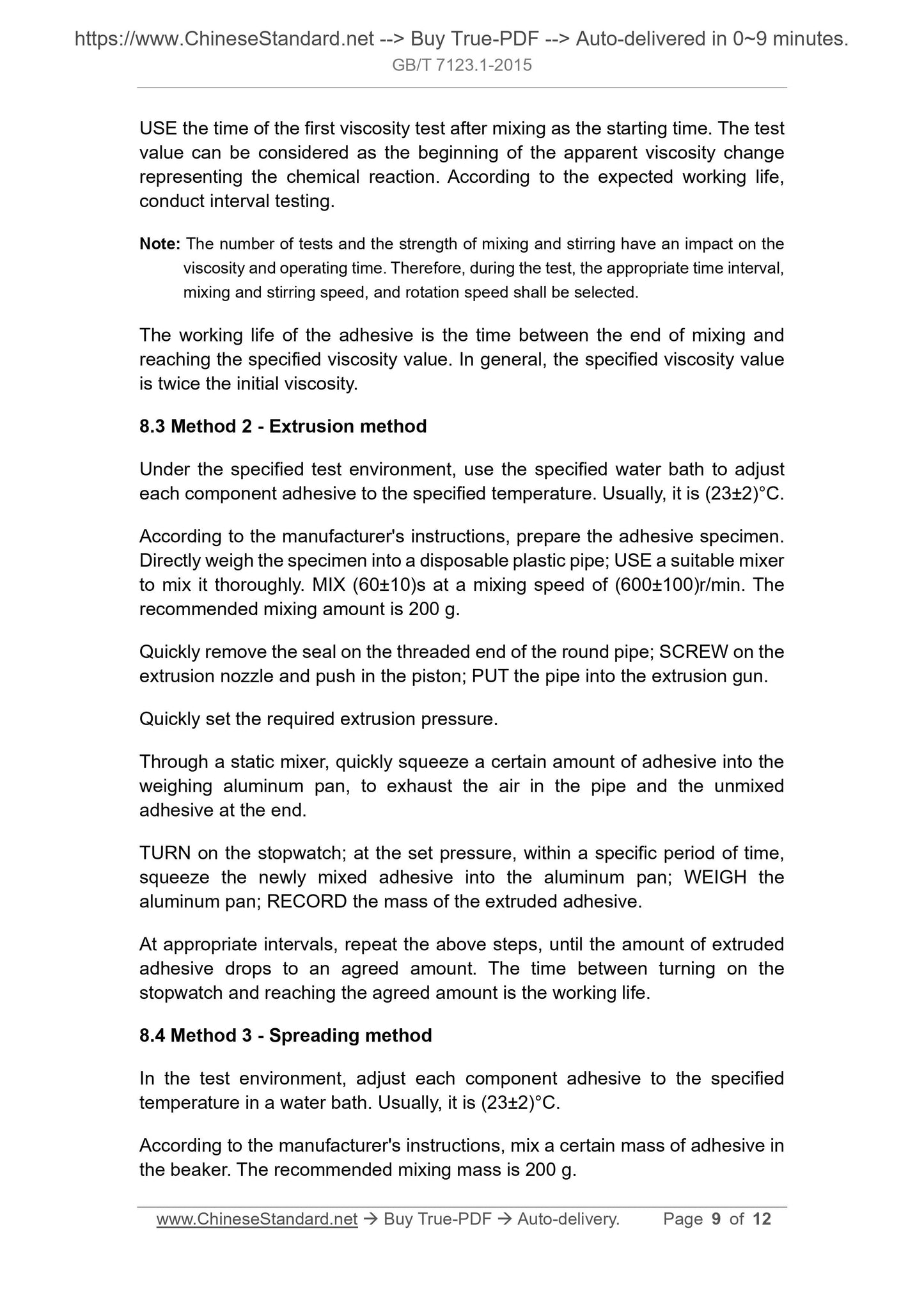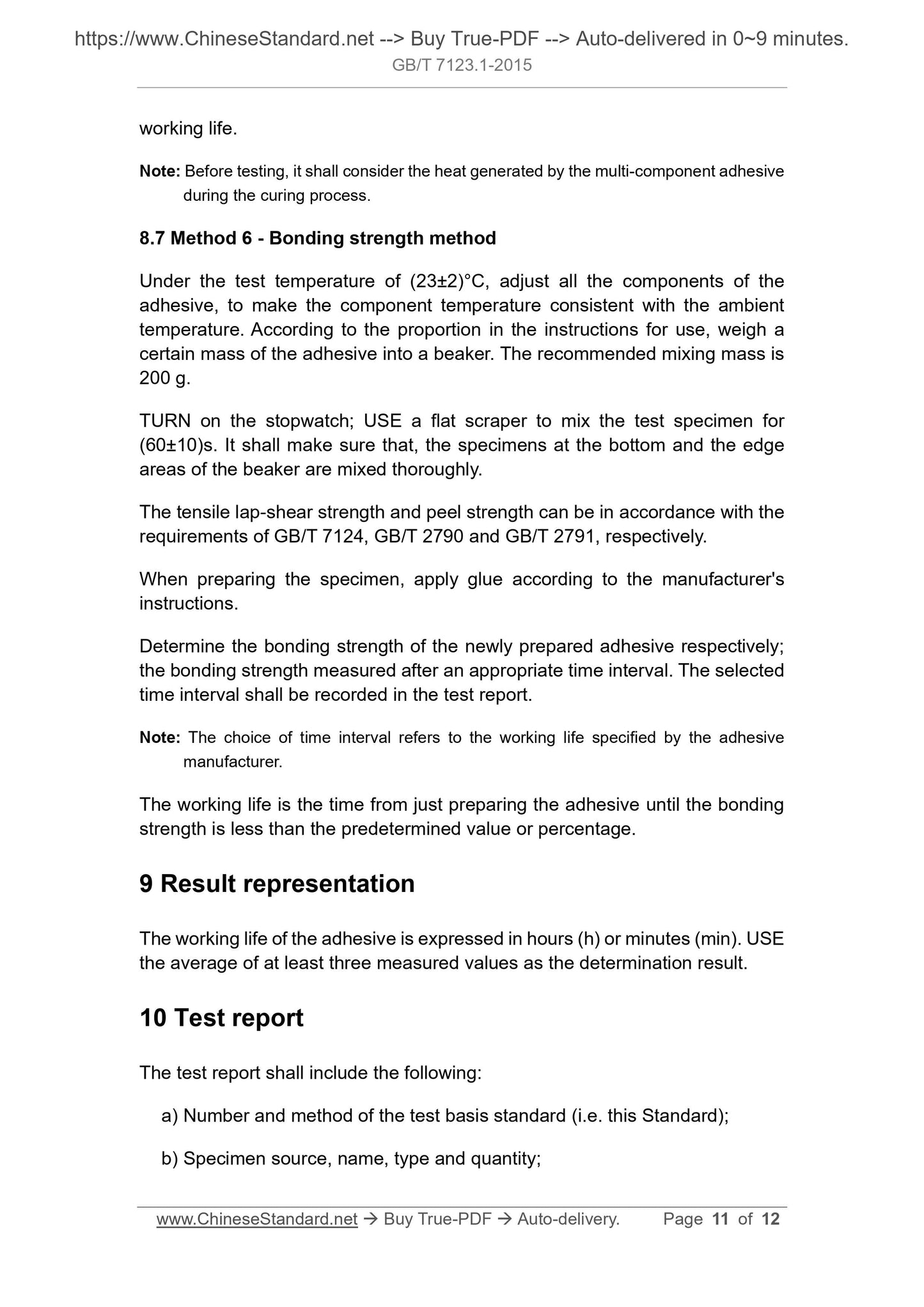1
/
of
6
www.ChineseStandard.us -- Field Test Asia Pte. Ltd.
GB/T 7123.1-2015 English PDF (GB/T7123.1-2015)
GB/T 7123.1-2015 English PDF (GB/T7123.1-2015)
Regular price
$140.00
Regular price
Sale price
$140.00
Unit price
/
per
Shipping calculated at checkout.
Couldn't load pickup availability
GB/T 7123.1-2015: Determination of the working life of multi-component adhesives
Delivery: 9 seconds. Download (and Email) true-PDF + Invoice.Get Quotation: Click GB/T 7123.1-2015 (Self-service in 1-minute)
Newer / historical versions: GB/T 7123.1-2015
Preview True-PDF
Scope
This Part of GB/T 7123 specifies the method for determination of the workinglife of multi-component adhesives.
This Part applies to the determination of the working time of multi-component
adhesives.
Basic Data
| Standard ID | GB/T 7123.1-2015 (GB/T7123.1-2015) |
| Description (Translated English) | Determination of the working life of multi-component adhesives |
| Sector / Industry | National Standard (Recommended) |
| Classification of Chinese Standard | G38 |
| Classification of International Standard | 83.180 |
| Word Count Estimation | 8,829 |
| Date of Issue | 2015-12-31 |
| Date of Implementation | 2016-07-01 |
| Older Standard (superseded by this standard) | GB/T 7123.1-2002 |
| Regulation (derived from) | State Standard Announcement 2015 No.43 |
| Issuing agency(ies) | General Administration of Quality Supervision, Inspection and Quarantine of the People's Republic of China, Standardization Administration of the People's Republic of China |
Share
